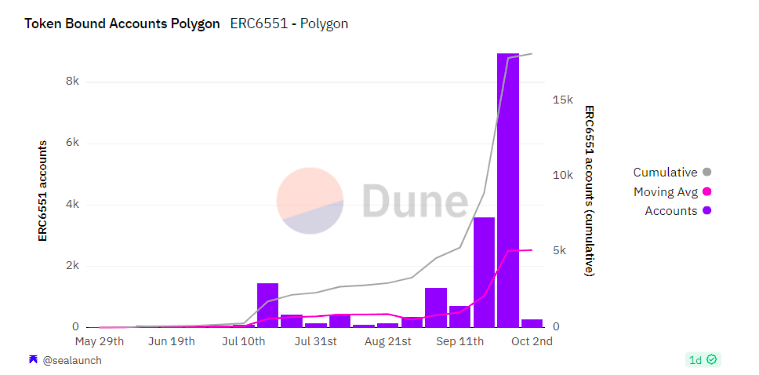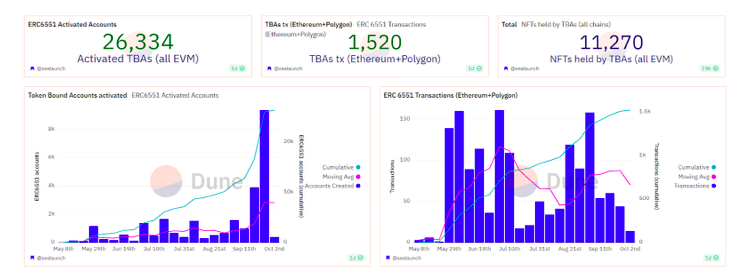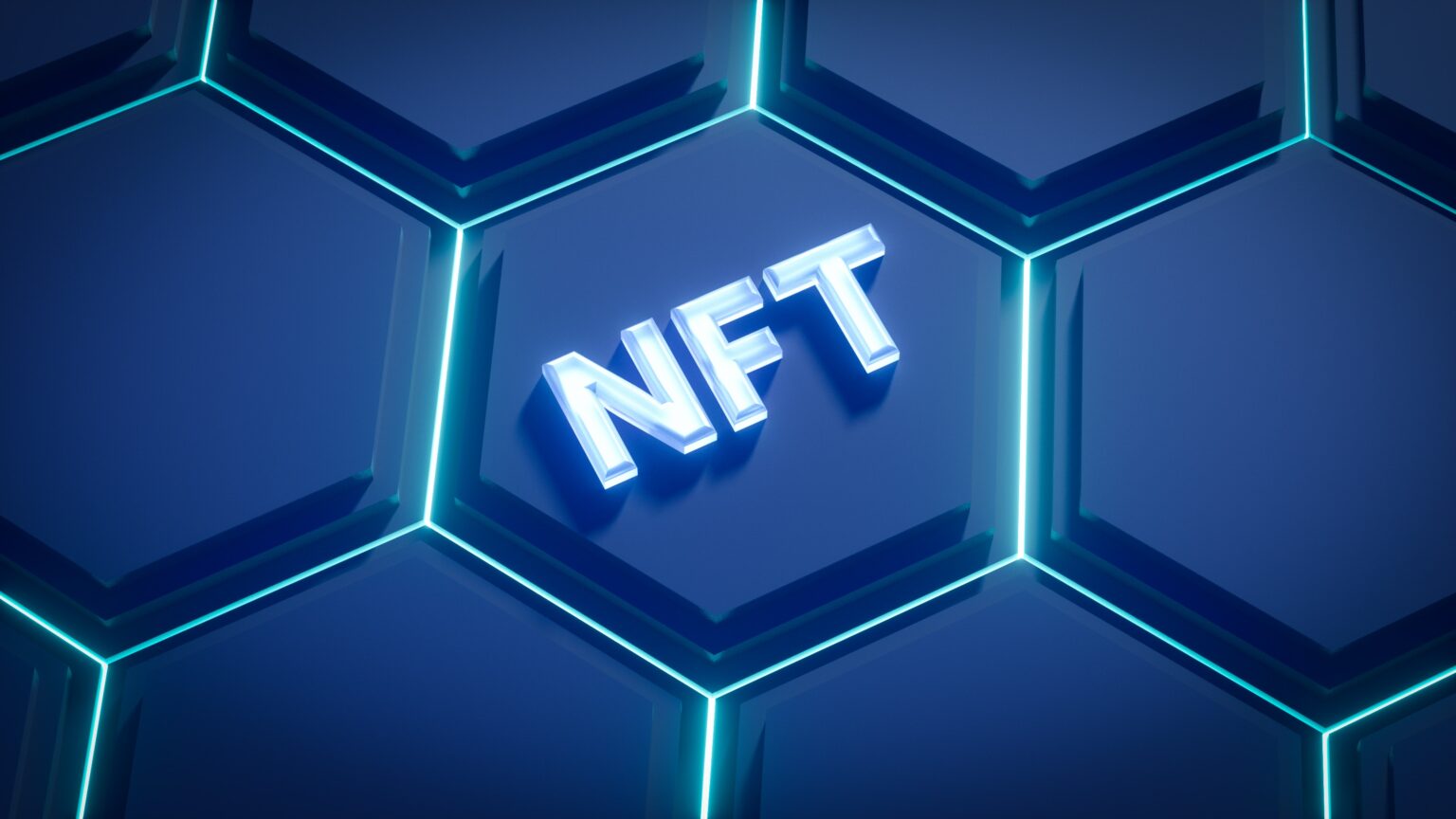In May, a groundbreaking development took place in the Ethereum market as Token Bound Accounts (TBAs), also recognized as NFTs that double as crypto wallets, made their debut.
These unique non-fungible tokens, governed by the ERC-6551 token standard, which enhances certain aspects of the well-established ERC-721 standard, have achieved remarkable success within the Polygon network over the past few months.
Let’s explore how these distinctive NFTs function in harmony and delve into some statistics regarding their expansion.
For a comprehensive understanding, read on.
Summary
- What is ERC-6551: the token standard reshaping the NFT and cryptocurrency wallet landscape?
- The surge in token bound accounts on the Polygon network in recent months.
What is ERC-6551: the token standard that is transforming the NFT and cryptocurrency wallet industry?
ERC-6551 represents a token standard that enables developers to enhance the design of NFTs to the extent that they resemble crypto wallets.
In February 2023, this standard was publicly introduced to the Ethereum community through an ‘improvement proposal’ designated as EIP 6551. Actual experimentation with it commenced in May.
The primary objective was to surmount specific limitations of ERC-721 and instill greater dynamism and interactivity within the non-fungible token market.
As previously noted, the defining characteristic of these tokens is their capacity to function as genuine cryptocurrency wallets, capable of securely holding assets. This innovation marks a historical first in the world of crypto, as it involves a token containing other tokens within it.
This distinctive attribute, termed “token-bound accounts” (TBAs) by Benny Giang, one of the co-authors behind the ERC-6551 proposal, extends further. These innovative NFTs possess the ability to sign cryptographic messages and verify signatures, allowing direct interaction with decentralized application smart contracts.
Consequently, this introduces the concept of social governance to NFTs, enabling the implementation of dynamic traits and features within these tokens, transcending the confines of mere collectible images.
The potential for novel applications and use cases emerging from this innovation is boundless, particularly within the realm of gaming, where AI could revolutionize the entire sector. With ERC-6551 and its token-bound accounts, web3 game developers can introduce fresh use cases, including inventories, equipment, and other mechanisms necessitating extensive resource interaction.
For the ongoing development of the Ethereum ecosystem, this marks a significant milestone, opening doors to a multitude of innovative forms of social interaction within the blockchain domain.
In describing the immense potential of his creation, Benny Giang stated:
Delving into the technical aspects, the ERC-6551 employs an unlicensed registry that is compatible with ERC-721 NFTs. This registry operates as a directory for Token Bound Accounts (TBAs). To facilitate TBAs, the registry dispenses a proxy contract by inheriting the metadata from the original ERC-721 token.
The assets housed within these TBAs, whether in the form of NFTs or fungible tokens, can be seamlessly transferred to other TBAs through a designated function within the proxy contract.
The expansion of token-bound accounts on the Polygon network in the recent past.
Over the recent months, specifically since July, a notable trend involving NFTs assuming the role of crypto wallets, also referred to as ‘token-bound accounts,’ has made a substantial entrance into Polygon’s blockchain.
Data sourced from Dune Analytics reveals that up to this point, a total of 18,116 ERC-6551 accounts have been activated, housing 7,581 NFTs within these ‘TBAs’ (Token Bound Accounts).
The real surge of this innovation on the Polygon network occurred between the conclusion of August and the entirety of September, witnessing a remarkable increase in statistics.
In the last week of September alone, over 8,900 ERC-6551 accounts were set in motion.
Among the NFT collections on Polygon, those that most actively utilize this standard and integrate the crypto wallet functionality include Dippi TBA, Lens Protocol Profiles, and OrbSoulbound.
Collectively, these three collections govern a staggering 77% of all generated accounts, leaving little space for competition.

By taking the broader market into consideration, which includes the presence of the Ethereum network, we can observe from the data a sporadic yet overall increasing level of activity from May to the present.
In total, 26,334 token-bound accounts were initiated across all EVM chains through 1,520 transactions, encompassing 11,270 NFTs held within them.
Following Polygon’s remarkable achievements, it is evident that the highest number of TBA activations occurred at the close of September, with over a third of the accounts being created between September 25th and October 1st.
In terms of transaction volume, there was a decline in activity from mid-July to mid-August. However, from August 21st onward, the metrics began to rebound, with the first week seeing 119 transactions recorded.

Considering the considerable potential introduced by the ERC-6551 standard in the market, we anticipate a continuous surge in the creation of TBA accounts in the forthcoming months. This growth aims to furnish users and developers with a versatile crypto wallet catering to NFTs and various other crypto assets.
It’s highly probable that this trend will evolve into a mainstream phenomenon, particularly as web3 game developers embrace TBAs within their virtual realms. This adoption is expected to generate fresh avenues for social interaction within the blockchain landscape.


